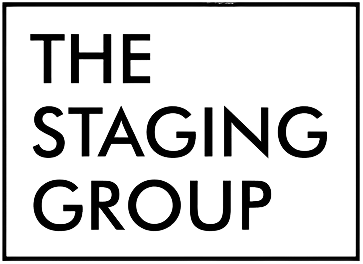Report on key metrics and get real-time visibility into work because it occurs with roll-up stories, dashboards, and automatic workflows constructed to maintain your team linked and knowledgeable. Structured Analysis and Design Technique (SADT) – helps folks describe and understand systems by way of a diagrammatic notation. SADT can be used as a useful evaluation tool of a given course of, using successive levels of detail. The SDLC may become https://www.globalcloudteam.com/ inflexible throughout growth, notably if the requirements alter. This incapability to regulate could result in a finished product that’s unable to fulfill the client’s evolving needs.
This implies that a development process part can only begin after the one before it’s finished. Finally, the planning process clearly defines the outline of system improvement. The project manager will set deadlines and time frames for each section of the software improvement life cycle, ensuring the product is introduced to the market in time. The system development life cycle or SDLC is a project management mannequin used to stipulate, design, develop, check, and deploy an info system or software program product. In different words, it defines the required steps needed to take a project from the thought or concept stage to the actual deployment and additional maintenance. System Design is a vital stage in the SDLC because it bridges the gap between requirements analysis and system improvement.
In addition, teams should set clear expectations about coding fashion and conventions to guarantee that all the code is constant. Either means, it’s important to establish clear processes for managing code as developers write it during implementation, especially if there are multiple developers working directly. Teams typically use a CI server, which merges newly written code right into a shared codebase and helps be sure that the code implemented by one developer doesn’t trigger conflicts with code written by others. The design stage focuses on deciding how the appliance behaves and what it seems like from the person’s perspective.
Stage Three: Design
- It acts as the inspiration of the whole SDLC scheme and paves the means in which for the successful execution of upcoming steps and, finally, a profitable project launch.
- A system development life cycle or SDLC is an organized project administration mannequin that defines or includes different stages for the development and implementation of a system.
- In the world of web and app development, SDLC is seen as predefined steps and methodologies to construct a high-quality system.
- In addition, the suggestions groups collect through the maintenance stage can help information future updates to the application.
- An present system is replaced by a brand new system that consists of replaced parts or modules to make sure that it meets new necessities.
- All of these components contribute to the consistent supply of high-quality software program.
Our devoted development group has a confirmed observe record of creating cutting-edge software solutions that exactly match the wants and business objectives of our clients. Including security in the system improvement life cycle is crucial to guarantee that the process is effective and safe from threats. This technique reduces overall costs by using prototype instruments like Figma and others to search out attainable problems early in the software program improvement process. By seeing problems early, developers can take motion shortly to reduce them. This section entails system monitoring, upkeep, and updates as required. It addresses person comments, security patches, performance enhancements, and bug fixes.

It is used when creating complex software systems, ensuring a structured approach from planning to deployment. It’s perfect for initiatives requiring clear timelines, documentation, danger administration, and quality management, notably in industries like finance, healthcare, and authorities what is the first phase in the systems life cycle. This Software Development Life Cycle model provides an iterative and systematic strategy to software program improvement.
They’ll usually turn the SRS doc they created right into a more logical construction that may later be applied in a programming language. Operation, coaching, and maintenance plans will all be drawn up in order that builders know what they should do all through every stage of the cycle transferring forward. For occasion, fast software growth, or RAD, breaks development work into small projects. It’s similar to Agile but extra aggressive and generally works greatest for small teams. Once teams release the appliance to all target finish users, deployment is full. Deployment is the stage where the applying moves into a production setting, the place it is accessible to end users.

Testing Stage – Is It The Precise One We Needed?

The main goal of SDLC is to supply a transparent structure to programming improvement teams so that they can operate efficiently, make informed judgments, and keep away from overpaying. It contains every thing from the beginning – similar to deciding what the software should accomplish and tips on how to the end of the project and tips on how to maintain the software after it is created. The upkeep part ensures that the system is functional, bettering the software/hardware, and updating the system. Software builders will monitor the overall system and add the latest security technologies to guard from cyber safety threats.
Software developers will select the right programming language and database based on software requirement specifications. In this section, the system design is created and ensures the system design will include all useful requirements of the appliance. The primary goal of the system improvement life cycle in software engineering is to develop a quality-based system in a structured method.
What Have Been The 5 Original Phases Of System Improvement Life Cycle?
Furthermore, developers are liable for implementing any modifications that the software may want after deployment. The info system might be integrated into its surroundings and finally installed. After passing this stage, the software is theoretically ready for market and may be provided to any end-users. Furthermore, builders will often create a software requirement specification or SRS document. Once the application has efficiently handed all tests, the testing part is complete. To understand the seven stages of the SDLC, builders ought to have a firm grasp on what each stage entails, why it’s necessary and standards for shifting onto the following stage.
Alpha testing is the first part of formal testing, during which the software program is tested internally using white-box techniques. Beta testing is the following part, by which the software program is examined by a larger ai trust group of users, typically outside of the group that developed it. The beta part is focused on decreasing impacts on users and may embody usability testing. Following every phase of a system growth life cycle the team and project supervisor might set up a baseline or milestones within the process. The baseline may embrace start date, finish date, phase/stage period, and price range information. Phase 8 of the systems growth life cycle is the post-implementation evaluation.
Systems engineers and developers can determine by way of planning whether or not a model new system can help an organization in attaining its strategic objectives. At this stage, the group also establishes clear expectations, deciding what’s and is not wanted within the software. SDLC and software growth life cycle are typically confused by individuals. We created this detailed system improvement life cycle guide in light of this. It will cowl its elementary definition, phases, primary software engineering strategies, and the most significant advantages and downsides it can provide throughout project development.


